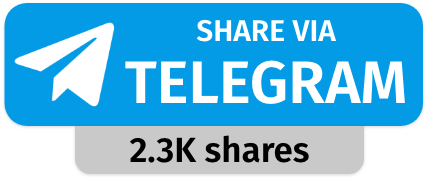Today’s Current Affairs: 4th September 2025 for UPSC IAS exams, State PSC exams, SSC CGL, State SSC, RRB, Railways, Banking Exam & IBPS, etc
Table of Contents
Land Subsidence:
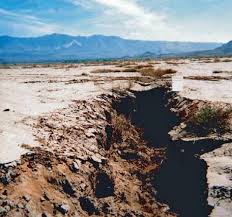
Uttarakhand, already battered by natural calamities including cloudbursts, flash floods, and landslides across its mountainous regions, is now facing a new and terrifying phenomenon: widespread land subsidence in Chamoli’s Nanda Nagar.
- Land subsidence is a gradual settling or sudden sinking of the Earth’s surface.
- This geotechnical phenomenon occurs when the ground loses its ability to support the weight above it, leading to a downward shift.\
- It can occur as a result of natural factors (e.g., volcanic or seismic activity, collapse of subsurface cavities, compaction of loose fine-grained deposits) or anthropogenic activities (e.g., excessive groundwater (GW) abstraction, mining, subsurface energy extraction).
- Although it is a gradual process, taking years to decades to develop, land subsidence presents serious socioeconomic, environmental, and security challenges globally.
- Land subsidence can cause damage to infrastructure and lead to increased flood risks and permanent reduction in aquifers’ storage capacity.
- It can also cause disturbance to water management and possible repercussions such as increased saltwater intrusion as a result of reduction in land elevation and changes in the gradient of streams and drains.
- High maintenance costs for roads, railways, pipelines, and buildings are only a few examples of stresses brought upon by land subsidence.
- Although land subsidence has been historically observed in low deltaic areas or coastal regions, it is being increasingly observed in large inland areas near densely urban, agricultural, and industrial areas with high groundwater demand.
- Excess groundwater extraction is believed to be one of the main causes of large-scale and high-magnitude land subsidence.
- Groundwater overexploitation compacts the underground reservoirs because water is the element partly responsible for holding up the ground.
- The excess water withdrawal leads to compaction of the underlying depleted porous formation, thus inducing land subsidence.
- The total global extent of land surface susceptible to subsidence has been estimated to be 12 million sq.km.
- Land subsidence has been observed all around the world, with major sites in the USA, China, Iran, Indonesia, Taiwan, Vietnam, Egypt, Japan, Mexico, and Italy.
Global Peace Index (GPI) 2025:
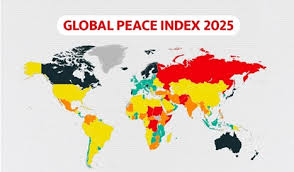
Iceland has once again secured its position as the most peaceful country in the world, as per the 2025 Global Peace Index (GPI).
Highlights of GPI 2025:
- It is the 19th edition of the GPI.
- It finds that global peacefulness continues to decline and that many of the leading factors that precede major conflicts are higher than they have been since the end of WWII.
- More countries are increasing their levels of militarisation.
- There are currently 59 active state-based conflicts, the most since the end of WWII and three more than the prior year.
- Last year, 17 countries recorded over 1,000 conflict deaths.
- Additionally, the successful resolution of conflicts is lower than at any point in the last 50 years.
- Conflicts that ended in a decisive victory fell from 49 percent in the 1970s to nine percent in the 2010s, while conflicts that ended through peace agreements fell from 23 percent to four percent over the same period.
- This year’s results found that the average level of global peacefulness deteriorated by 0.36 percent.
- Iceland remains the most peaceful country in the world, a position it has held since 2008. It is joined at the top of the index by Ireland, Austria, New Zealand, and Switzerland.
- Russia, for the first time, is the least peaceful country in the world on the 2025 GPI, followed by Ukraine, Sudan, Democratic Republic of the Congo, and Yemen.
- Western and Central Europe is the most peaceful region in the world, home to eight of the ten most peaceful countries, although its peacefulness has been falling over the last four years.
- South America was the only region in the world to record an improvement in peacefulness last year.
- The Middle East and North Africa (MENA) region remains the world’s least peaceful region.
- South Asia, the second least peaceful region globally, experienced the largest regional decline in peacefulness.
- India was ranked 115 on the GPI 2025, up one position from its 2024 spot.
- The most peaceful Asian countries were Singapore (6th), Japan (12th), Malaysia (13th), Bhutan (21st), and Mongolia (37th).
Securities Appellate Tribunal:
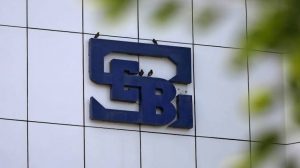
US-based trading firm Jane Street Group recently filed an appeal in the Securities Appellate Tribunal (SAT) against the Securities and Exchange Board of India (SEBI) in the alleged market manipulation case.
- The SAT is a statutory body established under the Securities and Exchange Board of India Act, 1992.
- As a quasi-judicial body, SAT’s primary objective is to hear and dispose of appeals against orders passed by SEBI or by an adjudicating officer under the Act.
- It has jurisdiction over the whole of India and operates from Mumbai.
- The SAT also hears appeals against the following orders:
- Orders issued by the Insurance Regulatory and Development Authority of India (IRDAI) in relation to cases filed before it.
- Orders issued by the Pension Fund Regulatory and Development Authority (PFRDA) in relation to cases filed before it.
- The SAT consists of one Presiding Officer and such a number of judicial and technical members as the Central Government may determine.
- The person so appointed as the presiding Officer should meet the following requirements:
- The retired or sitting judge of the Supreme Court
- Chief Justice of the High Court
- Judge of the High Court, who has completed at least seven years of service as a judge in a high court.
- Judicial Member: Judge of the High Court for at least five years of service.
- The tenure for the Presiding Officer and other members will be five years from the date of appointment, and they shall be eligible for re-appointment for another term of maximum five years.
- However, no presiding officer or member shall hold office after he/she has attained the age of 70.
- SAT exercises the powers of a civil court and has the authority to summon and enforce the attendance of witnesses, receive evidence, and examine witnesses under oath.
- It also has the power to require the discovery and production of documents.
- These appeals may be filed by any person aggrieved by SEBI’s decisions, including market participants, listed companies, intermediaries, or investors.
Unique Disability ID (UDID) Card:
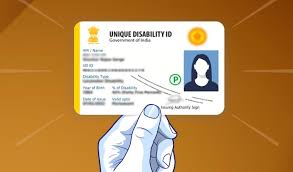
Less than 40% of India’s projected population of Persons with Disabilities (PwDs) have been issued a Unique Disability ID (UDID) Card, which enables access to government benefits, data show.
- A UDID card is a single document of identification for Persons with Disabilities (PwDs).
- It is the universal ID that is accepted all across the country.
- As per the Rights of Persons with Disabilities (RPwD) Act, 2016, UDID cards can be issued by home district hospitals as well as the hospital where the PwD is taking medical treatment.
- The UDID card has a total of 18 digits/characters.
- The first 2 characters represent State Code, the next 2 digits for the district code, the next 1 digit for the CMO code, the next 2 digits for disability type, the next 4 digits for year of birth of PwD, the following 6 digits for running number, and the last digit for check sum which is involved for security reasons.
- Three types of colour-based UDID Cards are issued based on the severity of the disability:
- White Card: When the disability percentage of a PwD is below 40%.
- Yellow Card: When the disability percentage of a PwD is above 40% but on or below 80%
- Blue Card: When the disability percentage of a PwD is above 80%.
- Unique ID for Persons with Disabilities Project (UDID Project) is initiated by the Department of Empowerment of Persons with Disabilities, Ministry of Social Justice & Empowerment.
- It is being implemented to create a national database of PwDs and issue a Unique Disability Identity Card (UDID) to each individual.
- It also aids in tracking the physical and financial progress of beneficiaries across various administrative levels — village, block, district, state, and national.
- It aims to build a comprehensive end-to-end system for issuing Universal IDs and Disability Certificates.
Incentive Scheme to Promote Critical Mineral Recycling:
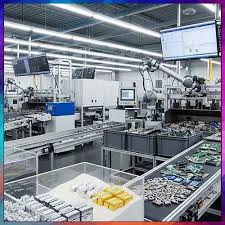
The Union Cabinet recently approved a Rs.1,500 crore Incentive Scheme to develop recycling capacity in the country for the separation and production of critical minerals from secondary sources.
- Incentive Scheme to Promote Critical Mineral Recycling is part of the National Critical Mineral Mission (NCMM), which is aimed at building the domestic capacity of and supply chain resilience in critical minerals.
- The Scheme will have a tenure of six years from Financial Year 2025-26 to Financial Year 2030-31.
- Total Outlay: Rs.1,500 crore
- Eligible feedstock is e-waste, Lithium Ion Battery (LIB) scrap, and scrap other than e-waste and LIB scraps.
- Expected beneficiaries will be both large, established recyclers, as well as small, new recyclers (including start-ups), for whom one-third of the scheme outlay has been earmarked.
- The Scheme will be applicable to investments in new units as well as expansion of capacity and modernization and diversification of existing units.
- The Scheme will provide incentive for the recycling value chain, which is involved in the actual extraction of critical minerals, and not the value chain involved in only black mass production.
- The incentives include a 20% capital subsidy on plant and machinery for projects that commence production within the stipulated timeframe and an operational subsidy tied to incremental sales.
- The operational support will be provided in tranches—40% in the second year and 60% in the fifth year—on meeting specific sales thresholds.
- To ensure wider participation, the total incentive has been capped at ₹50 crore per large entity and ₹25 crore per small entity, with limits on operating subsidies of ₹10 crore and ₹5 crore, respectively.
- The Scheme incentives are expected to develop at least 270 kilotons of annual recycling capacity, resulting in around 40 kilotons annual critical mineral production, bringing in about Rs.8,000 crore of investment, and creating close to 70,000 direct and indirect jobs.
Graphite Spyware:

The Trump administration has unfrozen a stalled Biden-era contract with Paragon Solutions, a Graphite spyware company founded in Israel.
- Graphite is designed to gain remote access to a mobile phone and essentially take control of it.
- The user of the spyware can access the mobile user’s photos, read their messages, and track their whereabouts and also monitor encrypted messages sent on platforms such as WhatsApp and Signal.
- The spyware also enables the phone to be used as a listening device by manipulating its recorder
- Spywares is malicious software that enters a user’s computer, gathers data from the device and user, and sends it to third parties without their consent.
- It collects personal and sensitive information that it sends to advertisers, data collection firms, or malicious actors for a profit.
Solar Orbiter Mission:
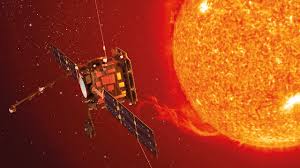
According to a new study the European Space Agency’s (ESA) Solar Orbiter Mission has traced the origin of Solar Energetic Electrons (SEEs) emerging from the Sun.
- Solar Orbiter Mission is a joint project of the European Space Agency and NASA which was launched in 2020.
- It explores the Sun and heliosphere from close up and out of the ecliptic plane.
- It carries six remote-sensing instruments to observe the Sun and the solar corona, and four in-situ instruments to measure the solar wind, energetic particles, and electromagnetic fields.
- Solar Energetic Electrons (SEE) are high-energy particles produced by the Sun.
- These particles play a key role in shaping the cosmic environment.
- They can be emitted during solar flares or coronal mass ejections
- It is observed that one type of SEE is tied to intense solar flares, explosive bursts from smaller patches of the Sun’s surface, while another stems from coronal mass ejections (CMEs).
- Between November 2020 and December 2022, the Solar Orbiter observed more than 300 bursts of SEEs.
- It will deepen understanding of space weather.
Senna spectabilis:
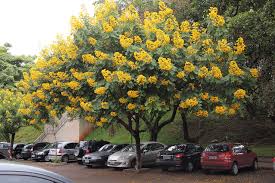
Kerala has carried out India’s first science-based, community-driven eradication of Senna spectabilis which could restore south India’s forests.
- Senna spectabilis is an invasive species native to tropical America.
- Common names: Popcorn Bush Cedar, Archibald’s Cassia, Calceolaria Cassia, Golden Shower, Scented Shower, Fetid Cassia.
- It forms dense, sterile thickets, choking out native plants, altering soil chemistry and depriving herbivores of food.
- It is a tree with a very dense, spreading crown; it can grow 7 – 18 metres tall.
- It is often planted for fuelwood, as an ornamental, and as a shade tree in agroforestry situations.
- It resembles Kerala’s state flower Cassia fistula, known locally as
- It is classified as Least Concern under the IUCN Red List.
- It has very aggressive growth rate and degrade lands in forest ecosystems which make it challenging to control its spread.
- Invasive Species is an organism that causes ecological or economic harm in a new environment where it is not native.
- These can be introduced to a new area via the ballast water of oceangoing ships, releases of aquaculture species, aquarium specimens, and other means.
Wet and Dry Lease of Aircrafts:

Wet and dry (aircraft sans crew) leases are increasingly being adopted by airlines in order to overcome the shortage of new aircraft globally that has grown acute since the pandemic because of supply chain challenges.
- In a wet lease, airlines acquire a fully operational aircraft along with a crew (pilots and cabin crew), maintenance personnel, and insurance (aircraft, crew, maintenance, and insurance).
- The lessee retains control over commercial operations (schedules, routes), while the lessor manages the operational aspects.
- This option is ideal for short-term exigencies such as seasonal spikes, route testing, or covering for grounded aircraft.
In a dry lease, the airline rents only the aircraft itself, without crew, maintenance, or insurance. - The lessee assumes full responsibility for these operational components, employing their own crews, arranging maintenance in accordance with DGCA (Directorate General of Civil Aviation) regulations, and obtaining appropriate insurance coverage.
- Dry leases are well-suited for long-term fleet expansion or modernization strategies.
- Aircraft leasing in India is governed by a robust legal framework, with the DGCA playing a pivotal role.
- Operations of an aircraft on wet lease are not encouraged by the DGCA, as the crew is often not approved by Indian authorities.
- The damp lease is a more limited variant of the wet lease.
- It is a leasing agreement under which an airline, the lessor, leases one of its aircraft, including flight crew and maintenance services, to another air operator.
Equity Derivatives : SEBI

SEBI has come out with a new framework for monitoring intraday positions in equity index derivatives, a move aimed at preventing risks caused by large exposures.
- Derivatives are financial contracts that derive value from an underlying asset.
- Derivatives allow traders to bid on the direction of the underlying asset’s price change without owning them.
- They allow investors to speculate on price movements, hedge against risks, or enhance portfolio returns.
- Equity Derivatives are financial instruments whose value is derived from the movements of a stock or a stock index.
- Equity derivatives serve various purposes for investors and traders, including risk management, speculation, and portfolio optimisation
- Equity Derivative Types: There are four common types of equity derivatives.
- Futures Contracts: These obligate the buyer to purchase and the seller to sell an underlying equity asset at a predetermined price and future date. Equity index futures, like the BSE S&P and Nifty IT, are popular examples.
- Options: Equity options give the holder the right, but not the obligation, to buy (call option) or sell (put option) an underlying stock or index at a specified price before or on a specific expiration date.
- Swaps: Equity swaps involve exchanging cash flows based on the return of an underlying equity asset. These can be used for hedging or investment purposes.
- Forwards: Forwards are the same as futures, where the parties are obligated to perform the contract. But forwards are non-standardised, over-the-counter contracts that don’t trade on the stock exchanges.
Painted Stork:
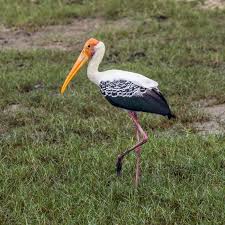
The National Zoological Park has stepped up surveillance and biosecurity measures after a fresh carcass of a migratory painted stork was found near a pond and another stork was detected sick in the water bird aviary, officials said recently
- Painted Stork is a large wading bird belonging to the stork family.
- It is easily recognized by its heavy yellow beak with a down-curved tip.
- Scientific Name: Mycteria leucocephala
- These birds are found across the plains of tropical Asia, from the Indian Subcontinent extending into Southeast Asia, south of the Himalayas
- They favor freshwater wetlands, but they also dwell in irrigation canals and agricultural fields, particularly during the monsoon when rice fields are flooded.
- They are absent from arid regions, dense forests, and higher hill areas.
- They are not migratory and only make short-distance movements in some parts of their range in response to changes in weather or food availability or for breeding.
- Conservation Status: IUCN Red List: Least Concern.
Vikram 3201:
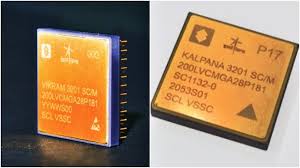
India unveiled its first fully indigenous 32-bit microprocessor, the Vikram 3201, at the Semicon India 2025 conference recently.
- Vikram 3201 is India’s first fully indigenous 32-bit microprocessor.
- Designed by the Vikram Sarabhai Space Center (VSSC), Vikram 3201 has been built by the Indian Space Research Organisation’s (ISRO) Semiconductor Laboratory (SCL) in Chandigarh.
- Unlike processors in everyday devices like smartphones or laptops, this one is designed specifically for rockets and satellites.
- It is an upgrade to Vikram 1601, a 16-bit processor that has powered ISRO’s launch vehicles since 2009.
- The Vikram 3201 marks the first time India has indigenously designed and fabricated a processor of this scale and specification for launch vehicle avionics.
- The chip’s job is to handle navigation, control, and mission management in launch vehicles, performing the split-second calculations needed to keep rockets stable and on course.
- Because space environments are harsh, the chip is manufactured to military-grade standards and rigorously tested to ensure it can keep working in extreme heat, cold, vibration, and radiation.
- The Vikram 3201 is built to withstand the extreme conditions of space missions, including temperatures from –55 degrees Celsius to +125 degrees Celsius.
- Unlike its predecessor, the new chip supports 64-bit floating-point operations, Ada programming language compatibility, and features on-chip 1553B bus interfaces for reliable communication during missions.
- It can handle substantial memory and execute complex instructions needed for launching satellites and space vehicles.
GST Rate Cuts 2025:
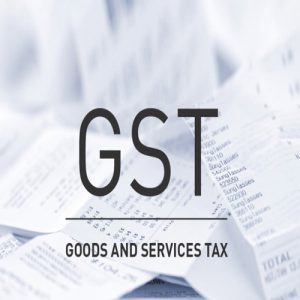
The government has announced major GST rate cuts in 2025, making essentials, healthcare, education, and even automobiles more affordable. From daily-use goods to farming equipment and electronics.
Highlights:
- Hair Oil, Shampoo, Toothpaste, Toilet Soap Bar, Tooth Brushes, Shaving Cream From 18% To 5%
- Butter, Ghee, Cheese & Dairy Spreads From 12% To 5%
- Pre-packaged Namkeens, Bhujia & Mixtures From 12% To 5%
- Utensils From 12% To 5%
- Feeding Bottles, Napkins for Babies & Clinical Diapers From 12% To 5%
- Sewing Machines & Parts From 12% To 5%
- Tractor Tyres & Parts From 18% To 5%
- Tractors From 12% To 5%
- Specified Bio-Pesticides, Micro-Nutrients From 12% To 5%
- Drip Irrigation System & Sprinklers From 12% To 5%
- Agricultural, Horticultural or Forestry Machines for Soil Preparation, Cultivation, Harvesting & Threshing From 12%To 5%
- Individual Health & Life Insurance From 18% To Nil
- Thermometer From 18% To 5%
- Medical Grade Oxygen From 12% To 5%
- All Diagnostic Kits & Reagents From 12% To 5%
- Glucometer & Test Strips From 12% To 5%
- Corrective Spectacles From 12% To 5%
- Petrol & Petrol Hybrid, LPG, CNG Cars (not exceeding – 1200 CC & 4000mm) From 28% To 18%
- Diesel & Diesel Hybrid Cars (not exceeding – 1500 CC & 4000mm) From 28% To 18%
- 3 Wheeled Vehicles From 28% To 18%
- Motor Cycles (350 CC & below) From 28% To 18%
- Motor Vehicles for transport of goods From 28% To 18%
- Maps, Charts & Globes From 12% To Nil
- Pencils, Sharpeners, Crayons & Pastels From 12% To Nil
- Exercise Books & Notebooks From 12% To Nil
- Eraser From 12% To Nil
- Air Conditioners From 28% To 18%
- Television (above 32”) (including LED & LCD TVs) From 28% To 18%
- Monitors & Projectors From 28% To 18%
- Dish Washing Machines From 28% To 18%
Coconut Development Board (CDB) has celebrated World Coconut Day:
The Coconut Development Board (CDB) has celebrated World Coconut Day by launching its newly revised schemes. It is a statutory body established under the Ministry of Agriculture and Farmers Welfare, Government of India It was established for the integrated development of coconut production and utilization in the country with focus on productivity increase and product diversification. The board came into existence on 12th January 1981.
Regional offices: It has regional Offices at Bangalore in Karnataka, Chennai in Tamil Nadu, Guwahati in Assam and Patna in Bihar. Headquarters: Kochi in Kerala
FDI in India Rises 15% in Q1 FY26:
India recorded a 15% rise in Foreign Direct Investment (FDI) during April–June FY26, with inflows reaching USD 18.62 billion compared to USD 16.17 billion in the same period last year. The United States emerged as the largest source of FDI, nearly tripling its investments despite tariff disputes.
- FDI Inflows: USD 18.62 billion (15% rise YoY).
- Total FDI (equity + reinvested earnings + other capital): USD 25.2 billion, up from USD 22.5 billion in Q1 FY25.
- In the March 2024-25 quarter, FDI inflows had declined by 24.5% year-on-year.
Chhattisgarh’s Power Capacity Rises to 30,000 MW:
Chhattisgarh, a state formed in 2000, has made remarkable strides in the power sector. From an initial capacity of 1,400 megawatts (MW) at the time of its formation, the state now generates 30,000 MW of electricity. This rapid expansion highlights Chhattisgarh’s transformation into one of India’s power hubs and its growing importance in meeting regional electricity demands.
56th GST Council Meeting:
The 56th GST Council meeting, chaired by Union Finance Minister Nirmala Sitharaman on 3rd September 2025 in New Delhi, marked one of the most significant overhauls of India’s indirect tax system since its inception in 2017. The meeting, which continues till 4th September, focused on next-generation GST reforms, with an emphasis on reducing the burden on the middle class, simplifying compliance for businesses, and ensuring better revenue collection. A key highlight was the Council’s decision to merge four tax slabs into two main ones—5% and 18%—while creating a special 40% slab for sin and luxury goods. The reforms are expected to make goods of mass consumption cheaper, boost consumer spending, and streamline the GST structure.
IIT-Madras Tops NIRF Rankings 2025:
The National Institutional Ranking Framework (NIRF) 2025, released by the Ministry of Education on September 4, has once again reaffirmed IIT-Madras as India’s leading educational institution. For the seventh year in a row, IIT-Madras secured the top position in the overall category, followed by the Indian Institute of Science (IISc) Bengaluru and IIT-Mumbai. The 10th edition of the rankings highlighted excellence across 17 categories, including engineering, management, law, medicine, agriculture, research, and sustainable development.


